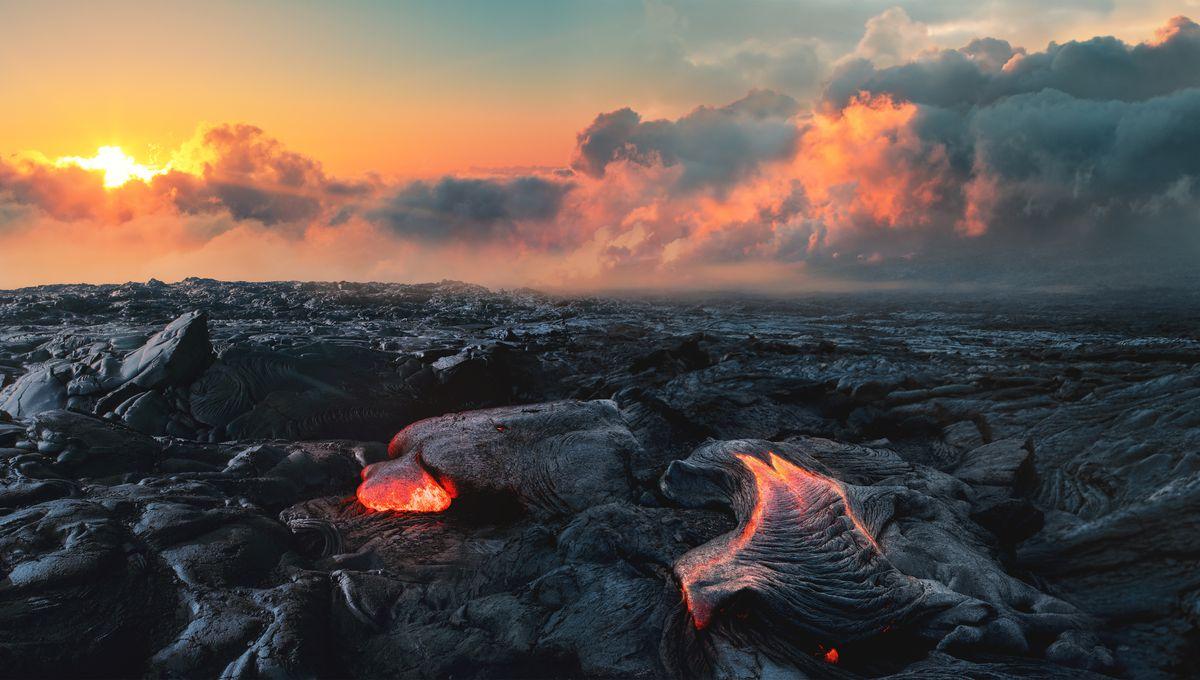-
Новости
- ИССЛЕДОВАТЬ
-
Страницы
-
Статьи пользователей
-
Форумы
Hawaiian Volcanoes Have Erupted With Gold That Came From Earth's Core

Hawaiian Volcanoes Have Erupted With Gold That Came From Earth's Core
Over 99.999 percent of Earth's gold is locked away within the Earth’s metallic core, buried beneath 3,000 kilometers (1,864 miles) of solid rock. However, every now and again, a volcanic eruption gives us a little bit of a taste of what’s down there.
Scientists at the University of Göttingen in Germany have recently been studying the geology of ancient rocks in Hawai'i that were formed of lava that erupted from a volcano before cooling into a solid material. To their surprise, the rock was rich in gold and a collection of other interesting metals. "When the first results came in, we realised that we had literally struck gold!" Nils Messling, paper author and geochemist at Göttingen University, said in a statement. Gold wasn’t actually the focus of the study. Instead, the researchers were investigating a specific isotope of the silvery-white metal ruthenium, 100Ru, which is slightly more prevalent in Earth’s metallic core than in its crust. Previously, this variation in 100Ru levels was so small that it was undetectable, but the team developed a refined method sensitive enough to measure it. Their analysis revealed an unusually high concentration of 100Ru in surface rocks, indicating that the lava had transported material from deep within the Earth to the surface. "Our data confirmed that material from the core, including gold and other precious metals, is leaking into Earth's mantle above," Messling commented. “Our findings not only show that the Earth’s core is not as isolated as previously assumed,” added Professor Matthias Willbold, another author of the paper in the same department. “We can now also prove that huge volumes of super-heated mantle material – several hundreds of quadrillion metric tonnes of rock – originate at the core-mantle boundary and rise to the Earth’s surface to form ocean islands like Hawai'i.” It’s a fairly important insight since very little is known about Earth’s core, especially its inner core, which is a near-total mystery. We know it’s there and it's metallic, but we're still unsure about what it’s made of. This study challenges the long-held assumption that Earth’s core is geochemically isolated and offers a rare glimpse into the deep interior of our planet, helping scientists better understand its composition, evolution, and the origins of valuable mineral deposits on the surface. Hawai'i is not unique in this regard. Mount Erebus, the tallest active volcano in Antarctica and the world’s most southerly active volcano, is known to cough out gusts of gas that are loaded with tiny crystals of metallic gold, no larger than 20 micrometers. Over the course of a single day, it's estimated that the volcano spews out around 80 grams of gold – that's worth around $6,000. The gold dust travels far and wide. Antarctic researchers have detected traces of the gold in ambient air up to 1,000 kilometers (621 miles) from the volcano. Earth’s innards are not the only potential source of gold on our planet. Many asteroids also contain gold, as well as other valuable metals, which is why there’s a growing interest in the prospect of mining asteroids. They’re tricky to get to, but it’s potentially easier than drilling into the ground to reach the core. The study is published in the journal Nature.


